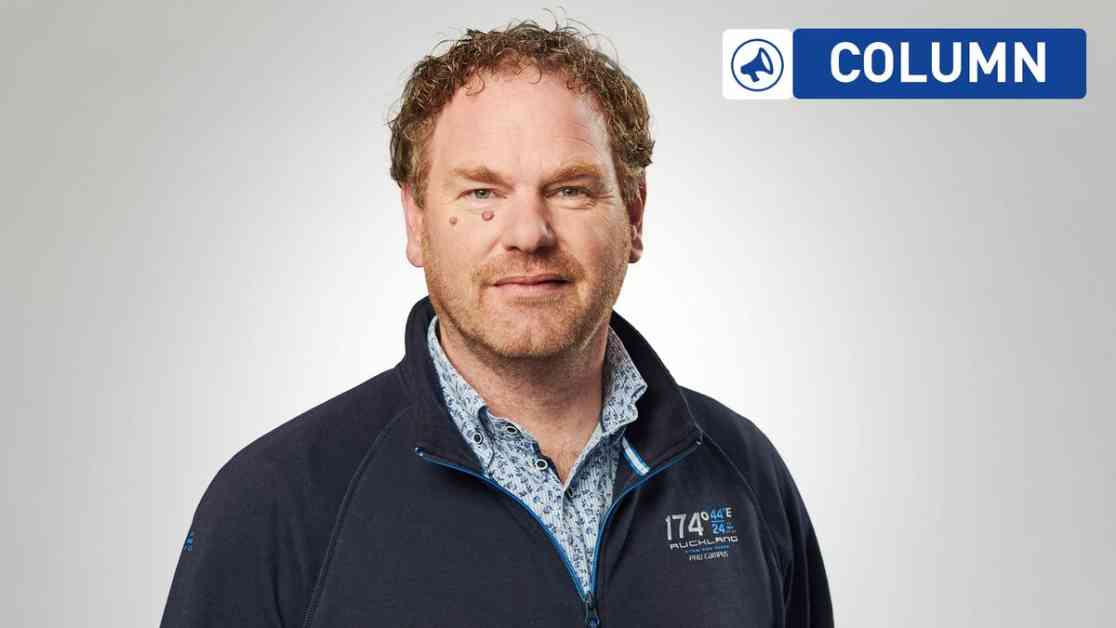This announcement allows $26 billion to flow to almost every state and local government in America.
The settlements, taken together, are the largest among many opioid-related cases currently being played out across the nation. They are expected to give a substantial boost to efforts to reverse the opioid crisis in areas that have been affected, including rural America.
The settlement was announced by Johnson & Johnson and AmerisourceBergen and Cardinal Health last year. However, the deal was conditional on the participation of a critical mass state and local governments.
Friday was the deadline by which the companies had to notify the governments if they felt that enough governments had agreed to the settlement. Four companies informed lawyers representing the governments that they had met their thresholds. Money could begin flowing to communities as early as April.
Joe Rice, who was one of the leading lawyers representing local governments in the litigation that resulted in the settlement, stated that “we’re never going be able to immediately solve this problem.” “We’re trying give small communities the chance to solve some of their problems.
The majority of settlement money must be used to address the crisis. This funding is urgently needed.
Kathleen Noonan (CEO of the Camden Coalition of Healthcare Providers) stated that a portion of settlement money should be used for housing people who have addictions and are currently homeless.
She said, “We have clients that have trouble staying clean to make it into a shelter.” “We want to stabilize them so they can recover.”
Camden County spokesperson Dan Keashen said that officials may use settlement money to fund a public education campaign warning about the dangers posed by fentanyl. They want more drug counselors to be sent out on the streets, additional social workers to be placed in municipal courts, and funds for anti-addiction medication in the county jail.
Officials from across the country are looking at ways to use the money for similar priorities.
California Gov. Gavin Newsom proposes a budget that would allocate $50 million of California’s $86 million state share for youth opioid education, treatment providers training, data collection, and distribution of naloxone (a drug that reverses overdoses).
According to Danielle Wang French, a Broward County lawyer, the county could increase the number of detoxification beds at its county-run facility from 50 to 70 or 75.
She said that the settlement was not sufficient but it was a start.
As fatal overdoses continue to plague the U.S., it is important that public-health experts urge governments to make sure people who are addicted have access to treatment. They stress the importance of funding programs that have been proven effective, collecting data about their efforts, and launching prevention efforts for young people. All this while emphasizing racial equality.
Joshua Sharfstein, who was a former secretary of Maryland Department of Health and is now vice dean of public Health at Johns Hopkins University, said, “It shouldn’t be: Ready, Set Spend.” It should be: Think, strategize and spend.
The four companies also reached a separate $590 million settlement agreement with the nation’s federally recognized Native American Tribes. The case is worth $2 billion and will be used to pay fees and expenses to the lawyers who spent many years on it.
New Brunswick, New Jersey-based Johnson & Johnson will have nine years to pay $5 billion of its share. Conshohocken (Pennsylvania-based AmerisourceBergen); Columbus, Ohio-based Cardinal Health and Irving, Texas’ McKesson all agreed to pay $21 billion each over 18 years. States must get their local governments to agree to the maximum amount in order to reach it.
Settlements go far beyond money. J&J has stopped selling prescription opioids and has agreed not to resume. Distributors agree to provide data to a clearinghouse that will help identify prescription drugs being diverted to black markets.
They aren’t admitting any wrongdoing, and they continue to defend themselves against claims they contributed to the opioid crisis. These claims were brought by entities not involved in the settlements.
The distributors stated in a joint statement that the settlement was “a significant milestone towards achieving broad resolution of governmental claims for opioids and providing meaningful relief to communities across the United States.”
Contrast this with the series of public health settlements made in the 1990s with companies involved in tobacco. In these cases, large chunks of settlement money were used by states to fund budget gaps or other priorities.
Each state will receive a different amount under the opioid settlement. This is based on the severity of the crisis as well as the population. The money is also shared with county and local governments. A few states, including Alabama, New Hampshire and Oklahoma, Washington, West Virginia, have not agreed to all or part of this settlement. This is mainly because they are either preparing for trial or have already made deals.
Lisa Davey, a Maryville Addiction Treatment Center recovery specialist, was in Camden this week giving out naloxone to people and asking if they would like to get treatment.
Davey stated that she would like to see more funding for detoxification and treatment programs to ensure people stay in them longer. She said that users can still detoxify and go back to the streets looking for drugs in a matter of days.
She said, “They need to take more time to recover.”
Anthony P., a 46-year-old man who picked up clean needles said that he had been struggling with addiction since he grew up. He expressed his desire to see an effort to reduce the supply of fentanyl, and other synthetic opioids, which are responsible for high overdose deaths.
He said, “Fentanyl has to go.”
Martha Chavis is the president and CEO at Camden Area Health Education Center. She said that there are many people who need services similar to hers. Users from far-flung areas now travel to Camden to obtain clean needles and test their drugs for Fentanyl.
This settlement with J&J, the three distributors is a significant step towards resolving the huge number of lawsuits in the U.S. regarding liability for the epidemic that caused the deaths of over 500,000 Americans over two decades.
McKinsey, a business consultant, and Endo, Mallinckrodt, and Teva are among the other companies that have reached either a national or a series local settlements. Purdue Pharma, an OxyContin manufacturer, and several states are currently in mediation with the U.S. Bankruptcy Court in an effort to reach a national settlement.
The coronavirus pandemic has exacerbated the crisis. U.S. opioid-related death rates reached a record high of more than 76,000 deaths in the twelve months ending April 2021. This is mainly due to the widespread use of fentanyl, and other laboratory-made drugs. The Lancet medical journal published a report that projected that over 1.2 million Americans would die from opioid overdoses between 2020-2029 if there were no policy changes.
John F. Kelly is a Harvard Medical School professor of psychiatry and addiction medicine. He said that he would like to see the money from settlements not only go for treatment, recovery, support efforts, but also to create systems to prevent another epidemic.
He suggested that a national board or organization be established to “prevent this type of lack of oversight from occurring again — where industry can create a health hazard for the public,” he stated.








